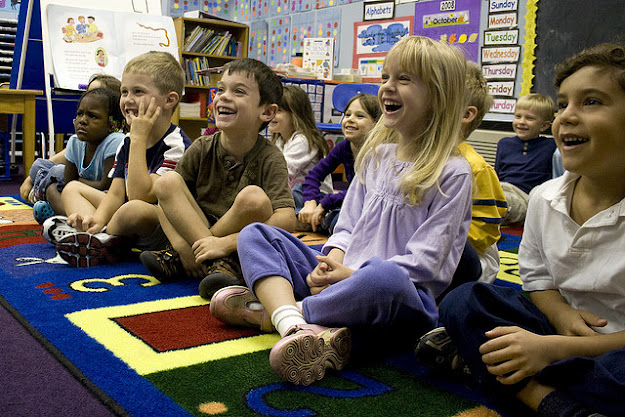Vocabulary development has for a long time been an important, well debated, and considered subject in education with schools and other educational institutions long recognizing the relationship between language development and children’s academic success.
Teachers, in particular, understand the importance of helping children to develop both the ability to understand spoken and written language and acquire a high degree of control of language that will be sufficient to enable them to express their ideas and feelings clearly.
One key aspect of a child’s language development is the growth of their vocabulary – the words they can understand and use to communicate with others.
It's not surprising that educational researchers suggest a strong relationship between vocabulary and comprehension, where a broad vocabulary (An extensive knowledge of words) and a deep vocabulary (Understanding the words) correlates with a better understanding of subjects and context.
When children write, a wider vocabulary gives them an extensive selection with which to express their ideas, choosing words that are well suited to the story or message that which they wish to share.
For most children, language development and vocabulary growth will come from natural sources, rather than from teaching: the conversations they have with their families and their peers, and with adults at school, and through the books they read and those that are read to them.
That doesn’t mean, however, there aren’t some ways we can help children to learn new words directly, and here are seven such approaches to building children’s vocabulary in the classroom.
1 Display interesting words in the classroom
A great first step in helping children to be aware of any unfamiliar or interesting words they encounter. This might be in the classroom, the books they read, in conversation, or on television.
Having a "Word Wall" on display where children can write down a new word on a sticky note and exhibit it, can motivate students to recognize, and collect new vocabulary. These can then form the basis of a class discussion, with everyone talking about the new vocabulary displayed each week.
2 Create word webs
Word webs are mind maps that promote active learning and help students develop higher-order thinking skills.
Building a word web helps children to think carefully about the meaning of a new word and how it is connected to the words they already know.
3 Explore morphology
Morphemes are the smallest units of grammar that convey meaning. They include roots (happi), prefixes (un), and suffixes (ness). By adding them together, we can create words that carry a distinct meaning (unhappiness). Learning some of the most common morphemes can help to unlock the meaning of many different words.
4 Collect words from reading
Learning the meaning of an individual word is trickier than you might think – so much depends on the context. Dog, for example, might refer to a common pet, but it might also mean to follow someone persistently. As the language used in books is often very different to that used in conversation, much of the rich language children learn comes not from explicit vocabulary teaching, but from reading.
5 Choose the words carefully
Selecting a small number of keywords to introduce to children is a common method of vocabulary teaching, but time is limited so choosing these words carefully is important.
Selecting words linked to a specific topic or words that have been picked because they might be especially useful is likely to have a greater impact than randomly choosing some non-contextual words for students to attempt to add to their writing.
6 Include idioms
Sometimes knowing what words mean won’t help you understand the meaning of a particular phrase. With an idiom, for example, the meaning is well known but isn’t reflected in the individual words: you might know what a fence is and you might know what sitting is, but that doesn’t help you know the meaning of sitting on the fence.
Include activities with idioms and take the time to explain them to students.
7 Explore different vocabularies
Sometimes the discussion around vocabulary teaching begins with a mention of a ‘word gap’, where for a range of reasons some children are seen as not having the words or language that their peers can draw on.
Whereas this might be true of some school-specific language, all children are likely to have areas where their vocabulary is already well-developed – often richer and deeper than their peers and the adults around them.
This is especially true of words linked to particular interests – dancing, swimming, pets, online gaming, etc. Giving children a chance to celebrate their existing word power is a great starting point for beginning discussions around how we learn words and why we might want to. And who knows, you might even learn a word or two!
Of course, vocabulary is just one aspect of the broad area of language development. Control of language depends on the words, but also on understanding how to employ the words, matching the purpose and audience to an appropriate grammar and syntax.
I hope that you enjoyed reading this article and that it will be helpful in your teaching, or learning of English.
Good luck.



Comments
Post a Comment